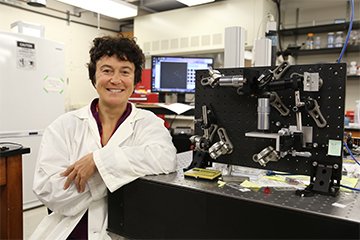Professor Morteza Gharib, and Dr. Jay Nadeau from GALCIT, as well as Dr. Christian Lindensmith from JPL are three of the four principle investigators on the holographic microscope project, dubbed SHAMU (Submersible Holographic Astrobiology Microscope with Ultraresolution). Their ultimate goal is to send the microscope on a spacecraft to search for biosignatures—signs of life—on other worlds such as Mars or Saturn's icy moon Enceladus. Holography is a method for recording holistic information about the light bouncing off a sample so that a 3-D image can be reconstructed at some later time. Compared to microscopy, holography offers the advantages of focusing over a relatively large volume and of capturing high-resolution images, without the trouble of moving parts that could break in extreme environments or during a launch or landing. [Caltech feature] [Videos of microbial mobility]
 Professor Morteza Gharib
Professor Morteza Gharib
 Dr. Jay Nadeau
Dr. Jay Nadeau
 Dr. Jay Nadeau next to digital holographic microscope
Dr. Jay Nadeau next to digital holographic microscope
 Dr. Christian Lindensmith
Dr. Christian Lindensmith

